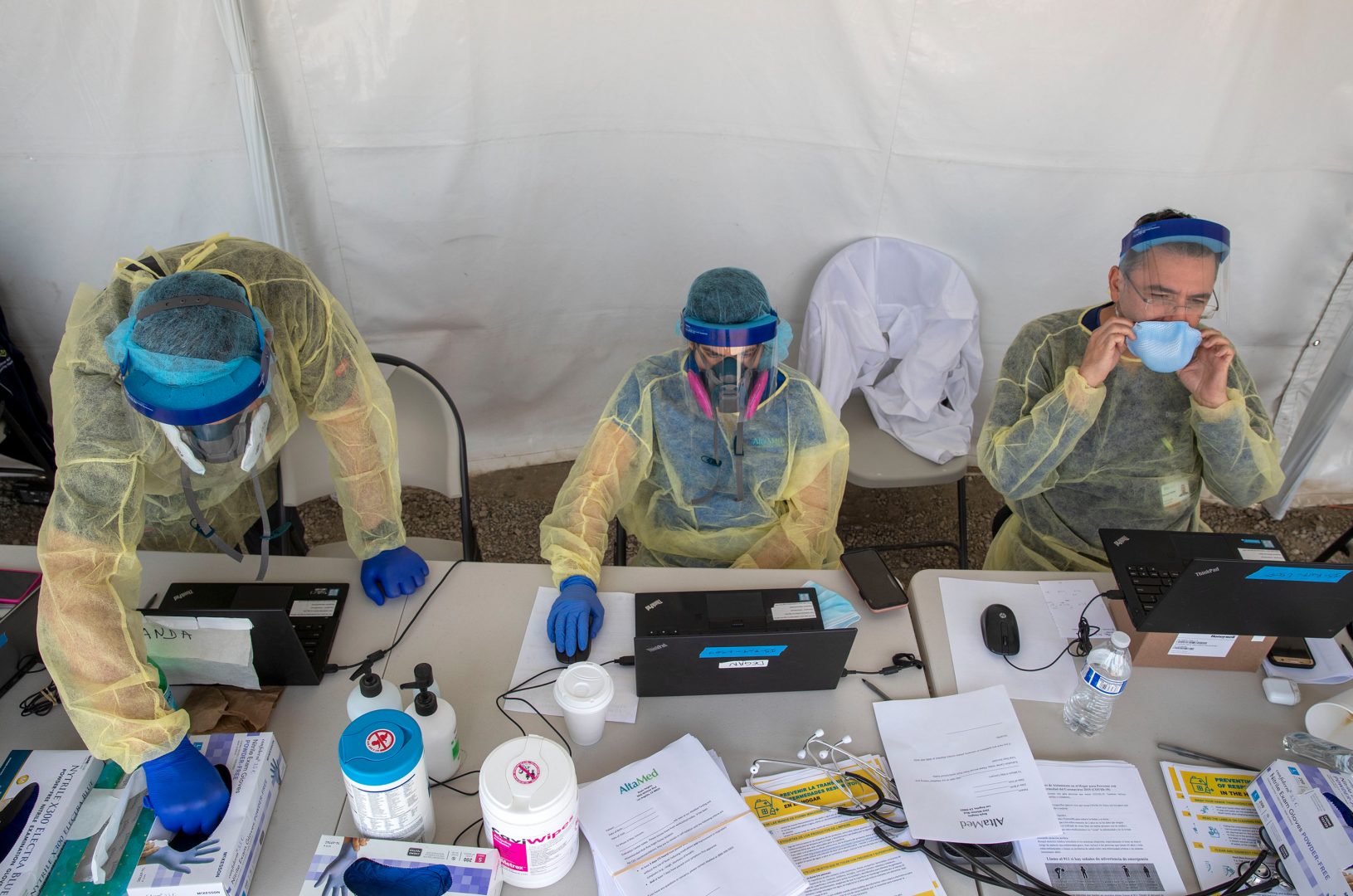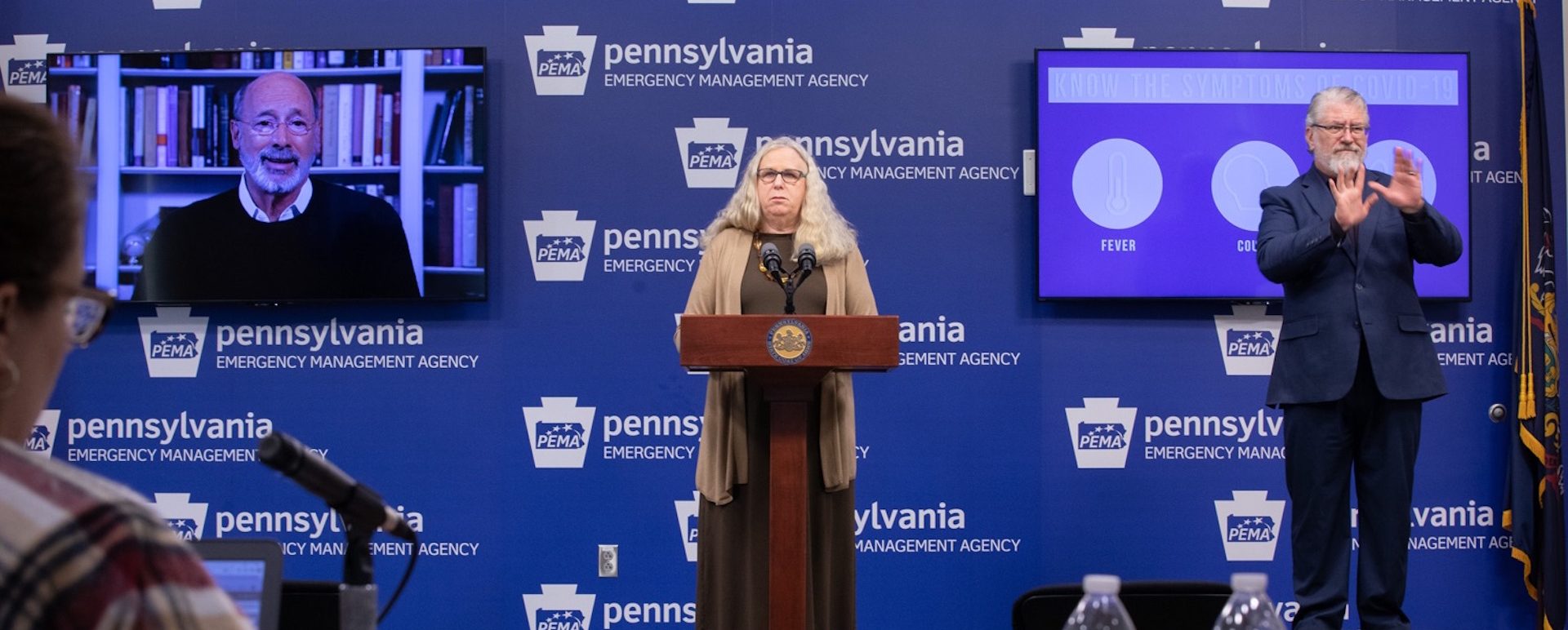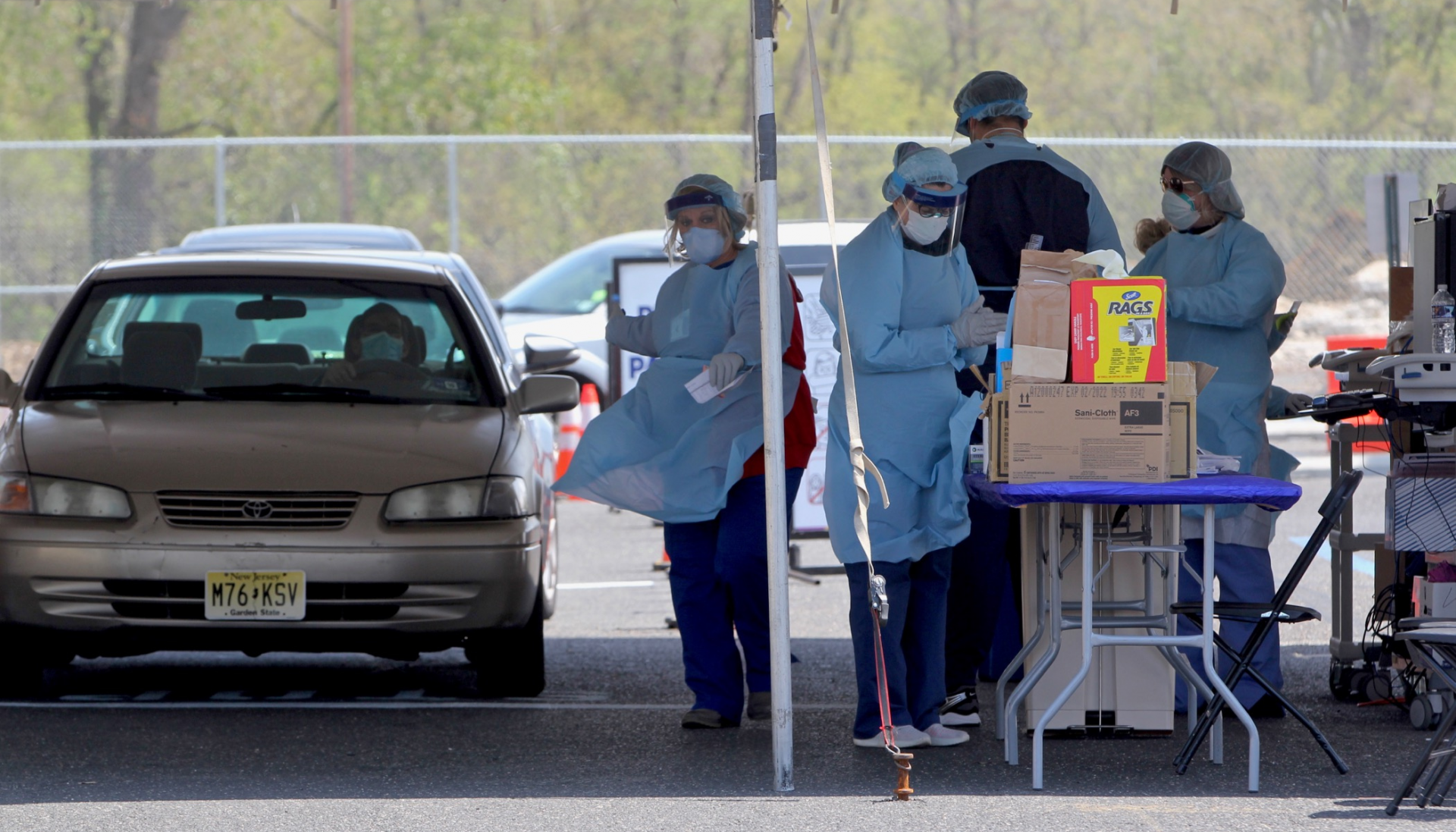
A COVID-19 testing operation in Boyle Heights, California. Daily case counts may be on the low side since access to testing is limited in some parts of the world.
Brian van der Brug / Los Angeles Times via Getty Images

A COVID-19 testing operation in Boyle Heights, California. Daily case counts may be on the low side since access to testing is limited in some parts of the world.
Brian van der Brug / Los Angeles Times via Getty Images

Brian van der Brug / Los Angeles Times via Getty Images
A COVID-19 testing operation in Boyle Heights, California. Daily case counts may be on the low side since access to testing is limited in some parts of the world.
What you should know
» Coronavirus facts & FAQ
» Day-by-day look at coronavirus disease cases in Pa.
» Red, yellow, green: What to expect in each of Pa.’s tiers for reopening
(Pittsburgh) — Pennsylvania’s Department of Health confirmed reporting by The Atlantic magazine, that the state includes results of both viral and antibody tests in its total number of novel coronavirus cases.
This practice has raised eyebrows as these tests analyze two different things: A viral test, which uses either a nasal or saliva swab, reveals whether a patient is currently infected with the coronavirus; An antibody test is a blood test that shows if someone’s has had a past infection.
“When you’re making real-time public health decisions, you want the data to be as clean as possible,” said infectious disease physician Dr. Amesh Adalja, a senior scholar at the Johns Hopkins Center for Health Security. “[When] people might have recovered months ago and then [are] added to the rolls, that’s not going to help you with decisions that you make today.”
The department said while results of both viral and antibody tests are included in its total number of cases, only viral are considered “confirmed” positive cases. Antibody results are classified as “presumed” positives.

Commonwealth Media Services
Secretary of Health Dr. Rachel Levine speaking at the virtual press conference in Harrisburg on March 20, 2020.
“We only use counts of confirmed cases when we’re looking at any metrics in terms of counties going from red to yellow, or yellow to green, or any other transition,” said Dr. Rachel Levine, the health department’s director.
The state’s COVID-19 information page notes that both confirmed and presumed positive test results are included in the state’s total case count. But it doesn’t breakdown what portion of cases are presumed or confirmed.
Presumed positives include more than just antibody results. Individuals who exhibit COVID-19 symptoms and have had a high-risk exposure to the coronavirus, but have not been tested, are also counted as presumed positives.
“There has been significant confusion in presenting probable cases separately, which is why we are reporting total cases,” said department spokesman Nate Wardle.
During a Thursday press conference, Levine said that, “we are separating it out for clarity,” meaning that the state could soon note the number of confirmed and presumed cases.
Wardle said that antibody results comprise just 0.7 percent of the state’s cases, while viral tests make up 97.5 of the state’s total.
The affect of negative antibody results is less clear on the state’s public data. Wardle did not know how many are included among the nearly 304,000 negative tests.

“We do not have negative test results separated, due to how they are reported to us, but it would be a small percentage,” said Wardle.
It’s important to keep track of not only the positive, but also, negative results as this can indicate what portion of the general population has been infected. However, viral tests are more likely to be positive than antibody tests, so lumping negative viral and negative antibody results together can skew the math.
It also inflates the total number of tests being preformed in Pennslyvania. Anaylsis by ProPublica finds the commonwealth is lagging behind many states in regards to testing.
“This is just another example of where people are sloppy with the data,” said Adalja. “It feeds conspiracy theories, because a lot of people are out there thinking that there is data being manipulated. And when they read stories like this it gives them less confidence that they can actually believe the numbers.”
Adalja said it’s important that people are able to have confidence in public health officials during a pandemic.
The days of journalism’s one-way street of simply producing stories for the public have long been over. Now, it’s time to find better ways to interact with you and ensure we meet your high standards of what a credible media organization should be.